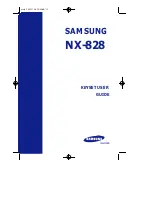
Calculation of COB ID
[dec]
[hex]
ID ranges
[dec]
[hex]
Function
Direction from the
point of view of the
sensor
1792 + node ID
0700h + node ID
1793 … 1919
0701h … 077Fh
Node guarding, heart‐
beat, boot up
Transmit
2020
07E4h
2020
07E4h
Transmit LSS
Transmit
2021
07E5h
2021
07E5h
Receive LSS
Receive
Example
The sensor receives node ID = 5, then sends emergency messages via ID 133, Trans‐
mit PDO 1 via ID 389, and SDOs via ID 1413.
The layer setting services can be used to configure the node ID of the sensor (
"Layer setting services (LSS)", page 21
9.3
Layer setting services (LSS)
Layer setting services are supported to set the node ID and the baud rate of the inclina‐
tion sensor.
The LSS slave is accessed via its LSS address (identity object), which is stored in object
1018h.
The LSS address comprises:
•
Manufacturer ID
•
Product code
•
Revision number
•
Serial number
The master uses the LSS services to request the individual services that are then exe‐
cuted by the inclination sensor. The LSS telegrams facilitate communication between
LSS master and LSS slave.
The following COB IDs are used:
07E4h = LSS slave to LSS master
07E5h = LSS master to LSS slave
Format of an LSS telegram
NOTE
An LSS telegram is always 8 bytes long. Byte 0 contains the command specifier (CS),
followed by 7 bytes for the data. All bytes that are not in use must be set to zero.
Table 9: Format of an LSS telegram
COB-ID
Byte 0
Byte 1
Byte 2
Byte 3
Byte 4
Byte 5
Byte 6
Byte 7
CS
Data
Switch Mode Global
The Switch Mode Global command switches the configuration mode on or off. The com‐
mand remains unconfirmed and the inclination sensor does not respond.
CANOPEN INTERFACE
9
OPERATING INSTRUCTIONS
| TMS/TMM88, TMS/TMM61
21
8019054/14IT/2019-06-27
| SICK
Subject to change without notice
















































